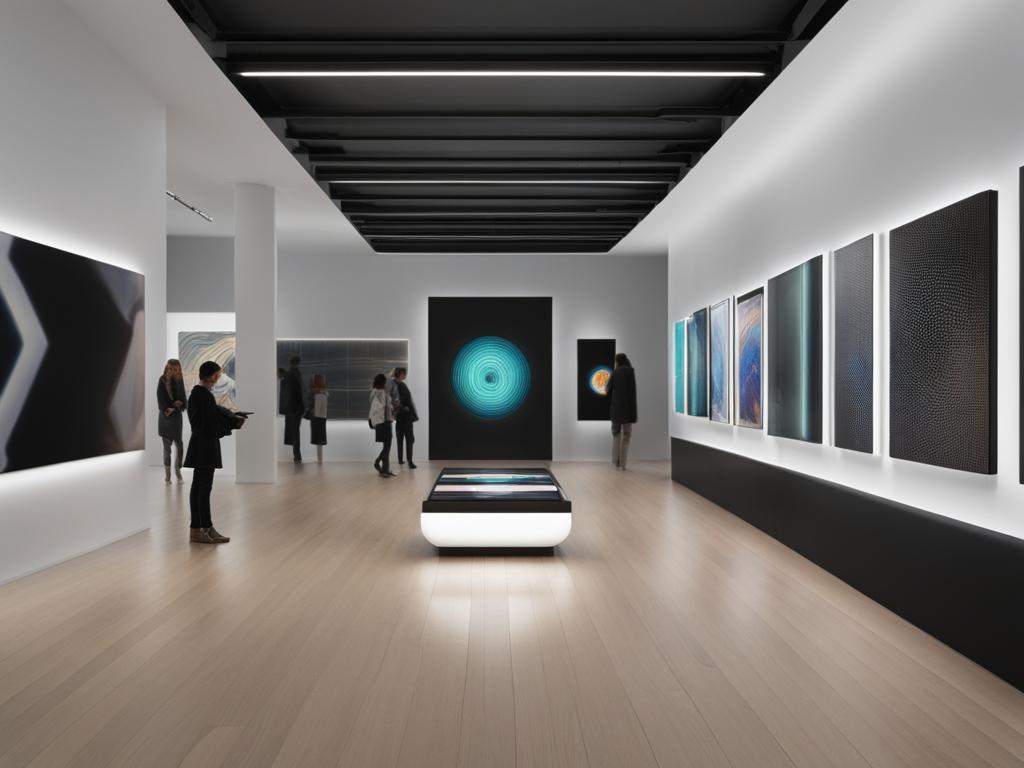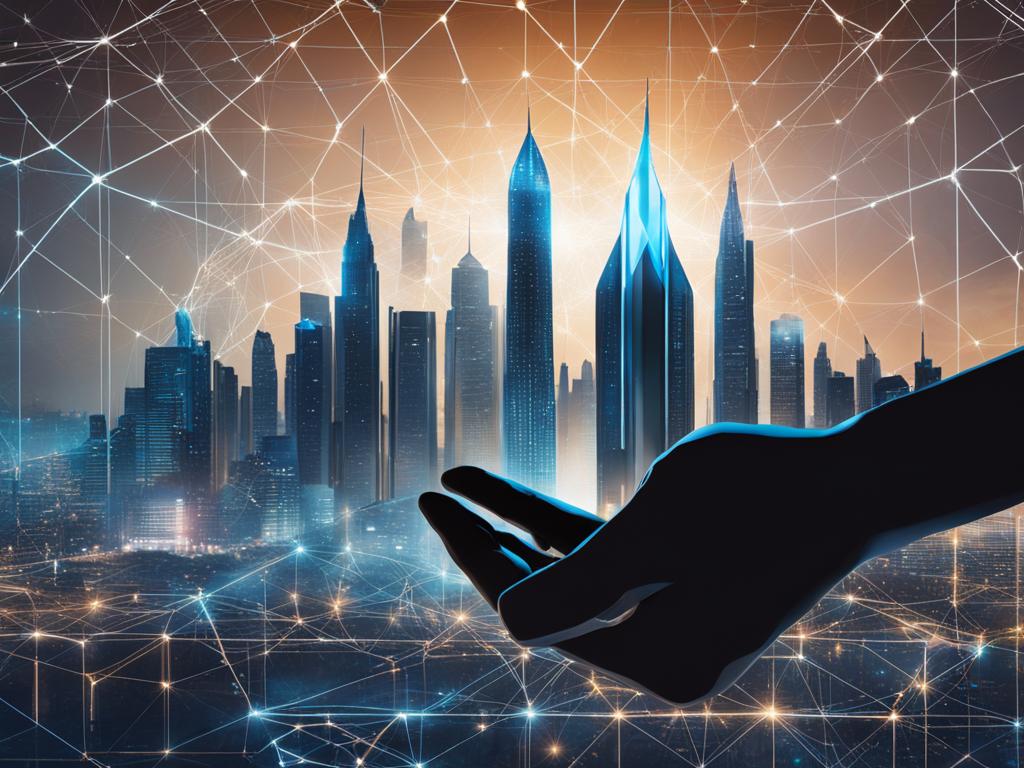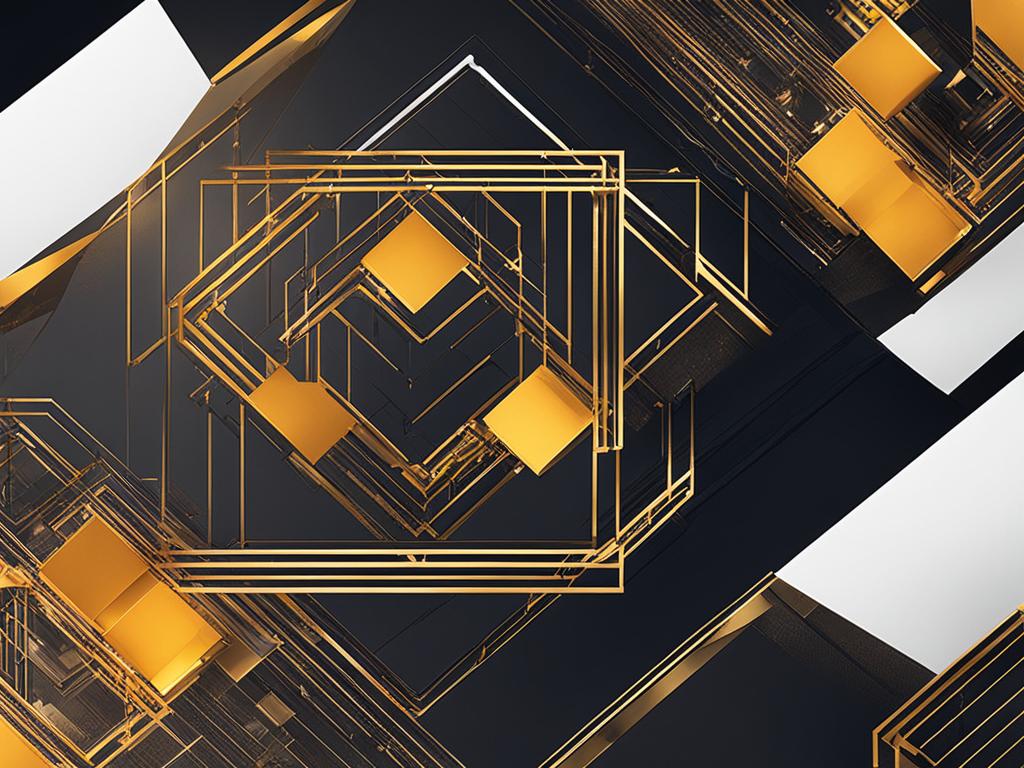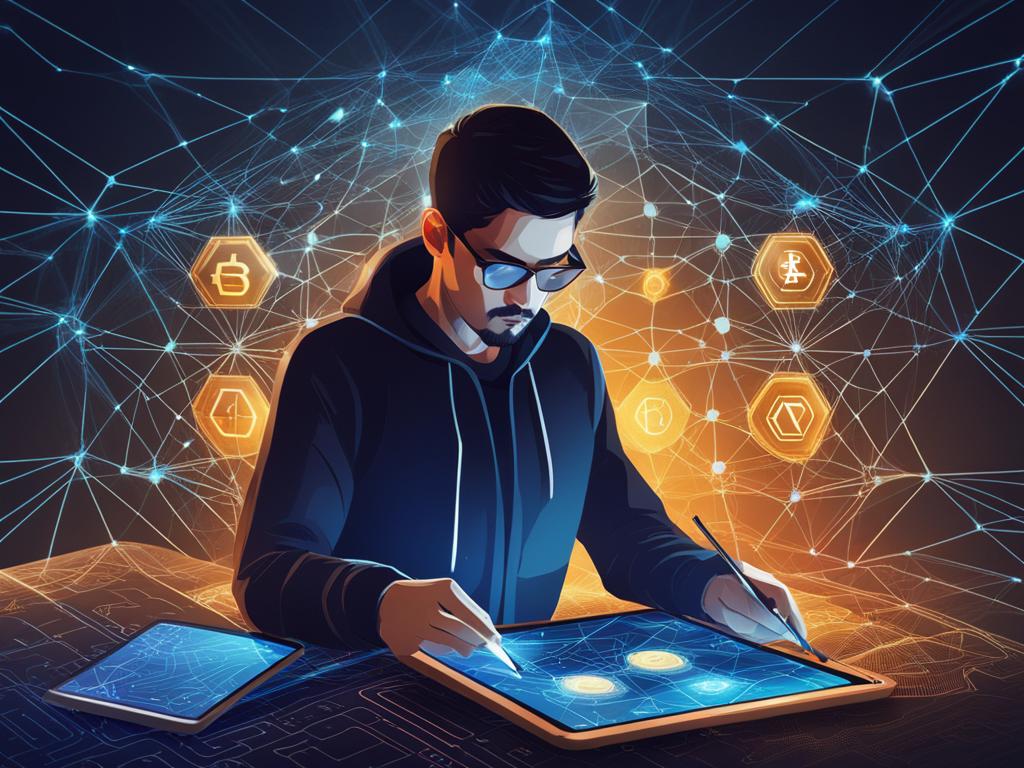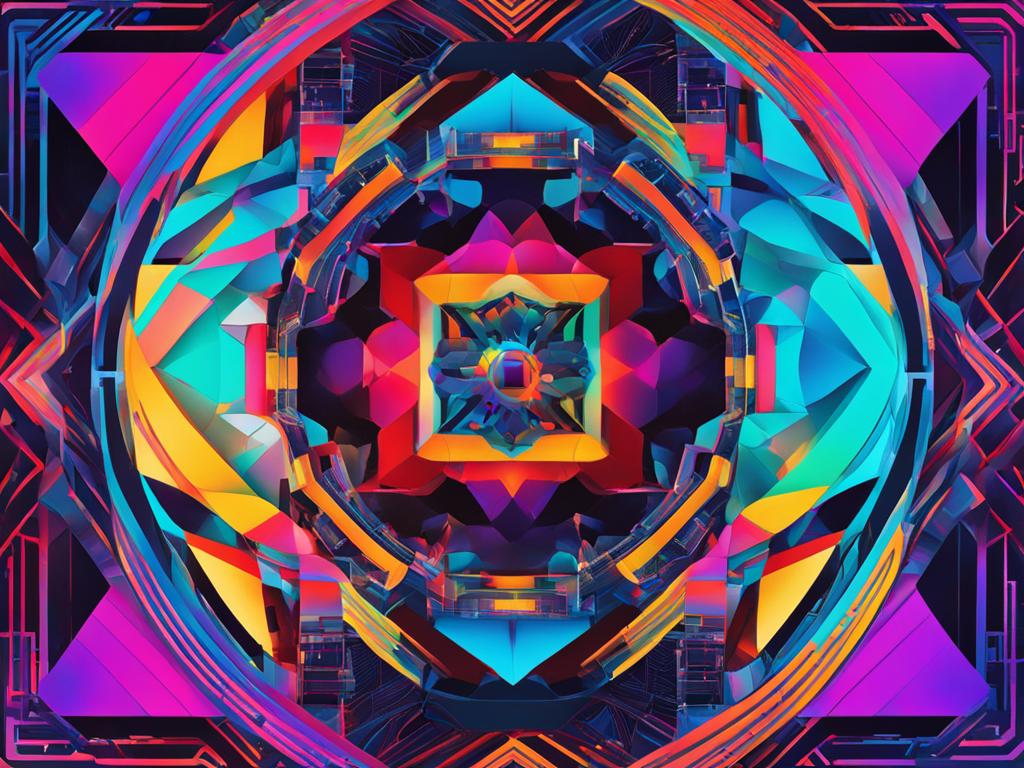As technology continues to reshape the world as we know it, the art industry is no exception. With the rise of digital art and the emergence of blockchain technology, new investment opportunities have emerged, transforming the art market as we know it. The integration of blockchain and Non-Fungible Tokens (NFTs) has brought about the creation of digital art assets that can be bought, sold and collected with cryptocurrency. This is just one example of the transformative potential of futures on the blockchain art. In this article, I will explore how blockchain technology is shaping the art industry, its impact on investment opportunities, and the challenges and regulatory considerations that arise along the way.
The Integration of Blockchain and NFTs in Art
The art industry has found a new ally in blockchain technology and Non-Fungible Tokens (NFTs). NFTs are cryptographic assets that are unique, indivisible, and verifiable and have transformed the way digital art is bought, sold, and collected.
The integration of NFTs and blockchain technology ensures the authenticity of digital art, which was a significant concern in the past. Tokenization, the process of transforming assets into tokens, and trading them on a blockchain, enables artists to monetize their digital art. The blockchain acts as a decentralized ledger that stores all transactions and provides complete transparency, ensuring provenance and authenticity.
Buying and collecting unique digital assets used to be a complex and risky process, but blockchain technology and NFTs eliminate those risks. The decentralized nature of blockchain allows artists and collectors to interact directly without intermediaries, which leads to transparency, lower transaction costs, and faster transactions.
The use of NFTs and blockchain technology has opened new avenues for artists to monetize their digital creations, such as selling limited edition digital art pieces or split ownership of a digital asset. Additionally, artists retain ownership of their original works, ensuring that their creations cannot be replicated or counterfeited.
The benefits of integration of blockchain technology and NFTs in the art industry are immense, and the market for digital art is growing fast.
Transforming the Art World Through Digital Assets
The art world is undergoing a profound transformation as new technologies emerge. Digital art, in particular, is challenging traditional notions of art ownership and is providing artists with a new medium to express themselves. Together with blockchain technology, digital art is becoming decentralized art.
Decentralized art represents a real democratization of art ownership, giving power to the artists and eliminating the need for intermediaries. With blockchain technology, artists can issue limited edition digital art pieces that have a unique identifier and provenance. This enables collectors to verify the authenticity of a piece, increasing its value. This approach also offers artists the opportunity to reach a global audience and get compensated for their work without the need for galleries or auction houses.
Blockchain technology offers a transparent and secure way to record the history of digital art, from creation to ownership, ensuring authenticity and provenance. Its use in the art world can also prevent fraud and protect artists’ copyrights.
This evolving landscape presents new opportunities and challenges for artists, collectors, and art institutions. As decentralized art continues to evolve and gain traction, it will be exciting to witness how digital assets continue to transform and improve the traditional art world.
The Role of Blockchain in Copyright Protection
As digital art gains value and popularity, it also faces an increased risk of copyright infringement. Fortunately, blockchain technology can help solve this problem. The blockchain’s immutable ledger can provide proof of ownership for digital art, helping artists protect their rights and control over their creations.
Blockchain technology can be used to create a tamper-proof record of an artwork’s origin, ensuring that its history is transparent and verifiable. This record can include information such as the artist’s name, the date of creation, and any subsequent changes in ownership. By creating a public record of an artwork’s history, the blockchain makes it much harder for someone to claim ownership of a work that they did not create.
In addition to providing proof of ownership, blockchain technology can also automate licensing and royalty payments using smart contracts. Smart contracts are self-executing contracts that automatically transfer digital assets, such as artwork, between parties when certain conditions are met. This makes it easier for artists to monetize their work and ensure they receive proper compensation for its use.
In summary, blockchain technology plays a critical role in ensuring copyright protection for digital art. By providing a secure and transparent record of an artwork’s history and enabling automated licensing and royalty payments, artists can maintain control over their creations and receive proper compensation for their work.
Ensuring Provenance and Authenticity with Blockchain
As the art world embraces digitization, the issue of authenticity and provenance becomes more challenging. Blockchain technology has emerged as a solution to this problem. By creating a decentralized and transparent record of an artwork’s history, from creation to ownership, blockchain offers a way to ensure the authenticity and provenance of digital art. This is particularly important for NFTs, which are entirely digital and rely on the ability to prove ownership.
The use of blockchain technology in art creates a permanent record that cannot be tampered with, ensuring authenticity and provenance for generations to come. Every transaction made on the blockchain, whether buying or selling art, is recorded immutably. This feature makes it possible to track the lifecycle of the artwork, from creation to sale.
Furthermore, NFTs can serve as a secure medium for the verification of technical information such as the time and manner of creation, digital signature of the author, and the chain of ownership. This metadata provides irrefutable records of the artwork, establishing its authenticity and originality beyond doubt.
Thus, the introduction of blockchain technology to the art industry can provide collectors, artists, and investors with proof of ownership and authenticity, as well as potentially boost the value of digital assets.
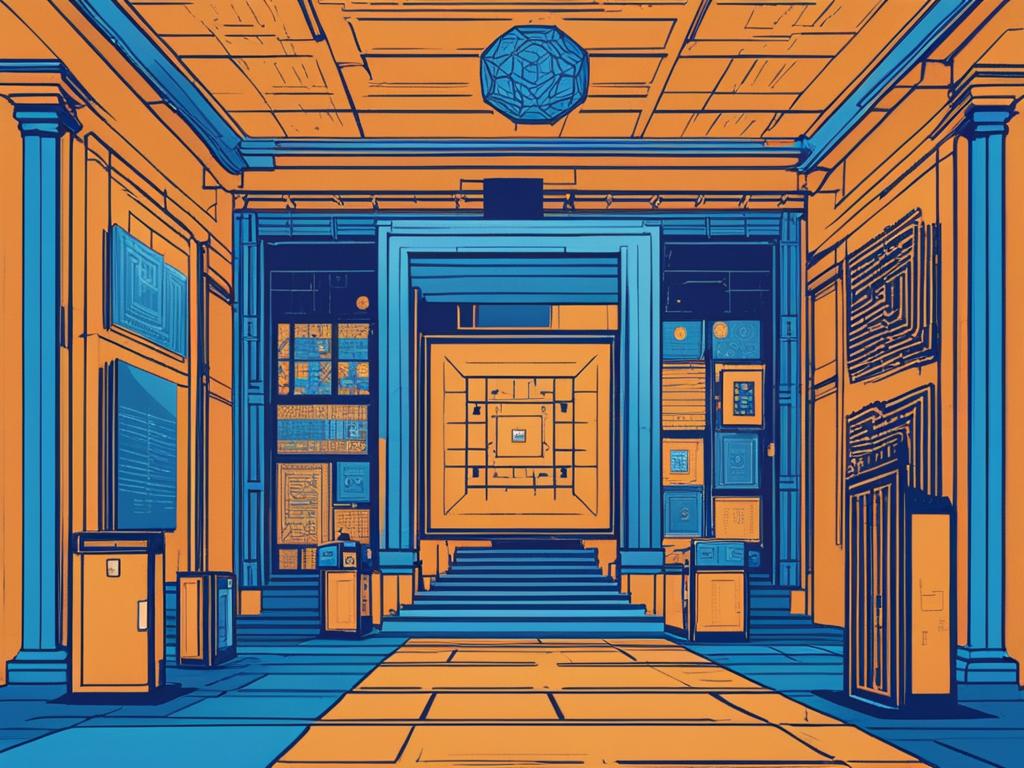
The Evolving Market Dynamics of Blockchain Art
As blockchain technology continues to disrupt traditional financial markets, it is not surprising that the art world is also experiencing significant changes. With the rise of blockchain art, cryptocurrencies are playing an increasing role in facilitating art transactions, making investments more accessible to a wider audience.
Cryptocurrencies like Bitcoin and Ethereum are used as currency to purchase digital art and NFTs, allowing for secure and decentralized transactions that bypass intermediaries. In addition, cryptocurrency-backed futures contracts are gaining popularity, providing investors with exposure to blockchain art without needing to own the underlying assets.
The future of art is inextricably linked to the evolution of blockchain technology. Digital art is flourishing, and as collectors increasingly flock to NFTs and other blockchain-based assets, it’s easy to see why some are predicting that blockchain art markets are poised for significant growth in the coming years.
“Blockchain technology is transforming the art market, offering immutable records and secure transactions that benefit artists, collectors, and investors alike. As the market continues to evolve, the potential for blockchain in the art world is seemingly limitless.”
Opportunities and Challenges for Investors in Blockchain Art
Investing in blockchain art presents a range of opportunities and challenges for those looking to diversify their portfolio. With the rising demand for digital art, investing in blockchain technology can provide investors with access to a new asset class.
The potential for liquidity is also a significant advantage of blockchain art investment. Unlike traditional art markets, where buying and selling assets can take months or even years, digital art can be traded instantaneously on blockchain platforms.
However, investing in this rapidly evolving market can also be risky. As with any emerging technology, the regulatory landscape is still unclear, and the risk of scams and fraud remains high. Market volatility is also a concern, with prices of digital art assets being inherently unstable.
To mitigate these risks, investors should take a measured approach to investing in blockchain art. Conducting thorough due diligence on the platform and artwork being considered is essential, as well as diversifying investments across multiple assets and platforms.
Investors should also keep an eye on the regulatory environment, ensuring compliance with applicable laws and regulations and being aware of any changes that may affect investments.
“With the transformative potential of blockchain technology in the art world and the continued rise of digital art, investing in blockchain art can provide opportunities for diversification and potential for liquidity. However, understanding the risks and taking a measured approach is essential for success in this rapidly evolving market.”
Regulatory Considerations in Blockchain Art
As blockchain technology and digital art assets continue to gain traction, it is essential to consider the regulatory implications of these emerging industries. Governments and regulatory bodies around the world are grappling with how to address the unique challenges posed by blockchain art and NFTs.
One of the primary concerns is the potential for fraud and deception, with new digital art platforms and marketplaces popping up every day. Governments may seek to regulate these platforms to protect consumers and prevent illegal activities such as money laundering.
Another consideration is the need for standardized industry practices. As blockchain art becomes increasingly popular, it will be important to establish commonly accepted best practices for the creation, trading, and storage of digital art assets. This will help to ensure a transparent and trustworthy market for buyers and sellers alike.
Table: Regulatory Challenges in Blockchain Art
| Challenges | Regulatory Implications |
|---|---|
| Lack of standardized practices for the creation of digital art assets | Regulators may seek to establish industry standards to ensure quality and transparency in the market. |
| Potential for fraudulent activities and deception | Regulators may seek to implement measures to prevent fraud and protect consumers. |
| International regulations and standards | Negotiations between countries may be necessary to establish international regulations and standards. |
Finally, there is the challenge of addressing the decentralized nature of blockchain art. With no centralized authority controlling the creation and distribution of digital art assets, it may be difficult for governments to enforce regulations or protect intellectual property rights.
As the blockchain art market continues to evolve, new regulatory challenges are sure to arise. However, with careful consideration and collaboration between industry leaders and regulators, we can ensure a safe, transparent, and thriving market for digital art.
Conclusion
As we have seen, the integration of blockchain technology and digital art is transforming the art world and opening up new investment opportunities. Blockchain technology is introducing decentralized art, transparent provenance records, and copyright protection for digital artists. It is also enabling investors to diversify their portfolios and gain exposure to the future of art.
The future of blockchain art is promising, and we can expect to see continued integration with emerging technologies. As the market evolves, investors will need to navigate the opportunities and challenges presented by this rapidly changing landscape. However, with the potential for diversification and liquidity, blockchain art may become a staple in many investors’ portfolios.
Decentralized art may also change how we experience and view art, as it democratizes ownership and has the potential to reach a global audience. The integration of blockchain technology is just the beginning of the digital transformation of the art world, and it will be exciting to see how it evolves in the future.

